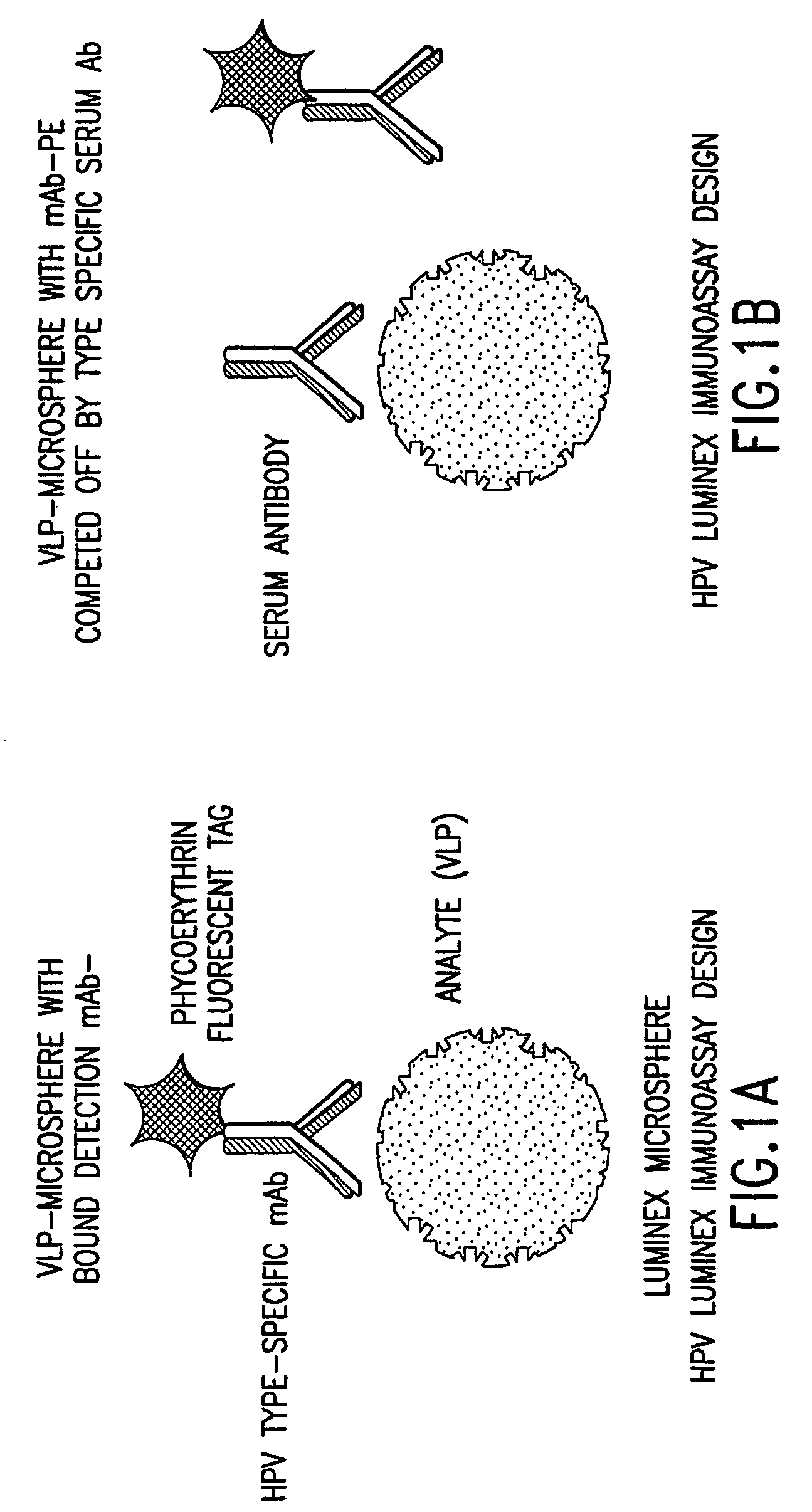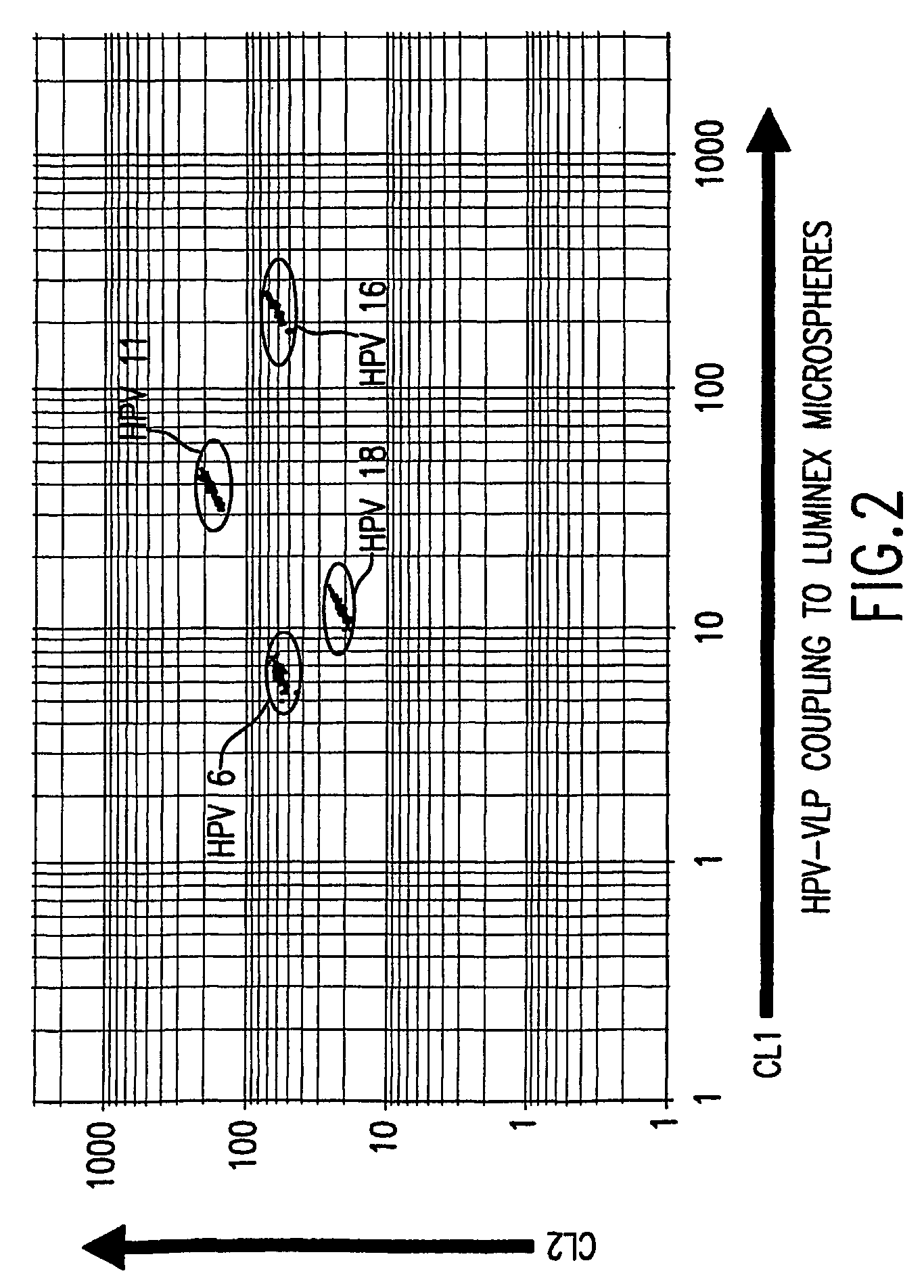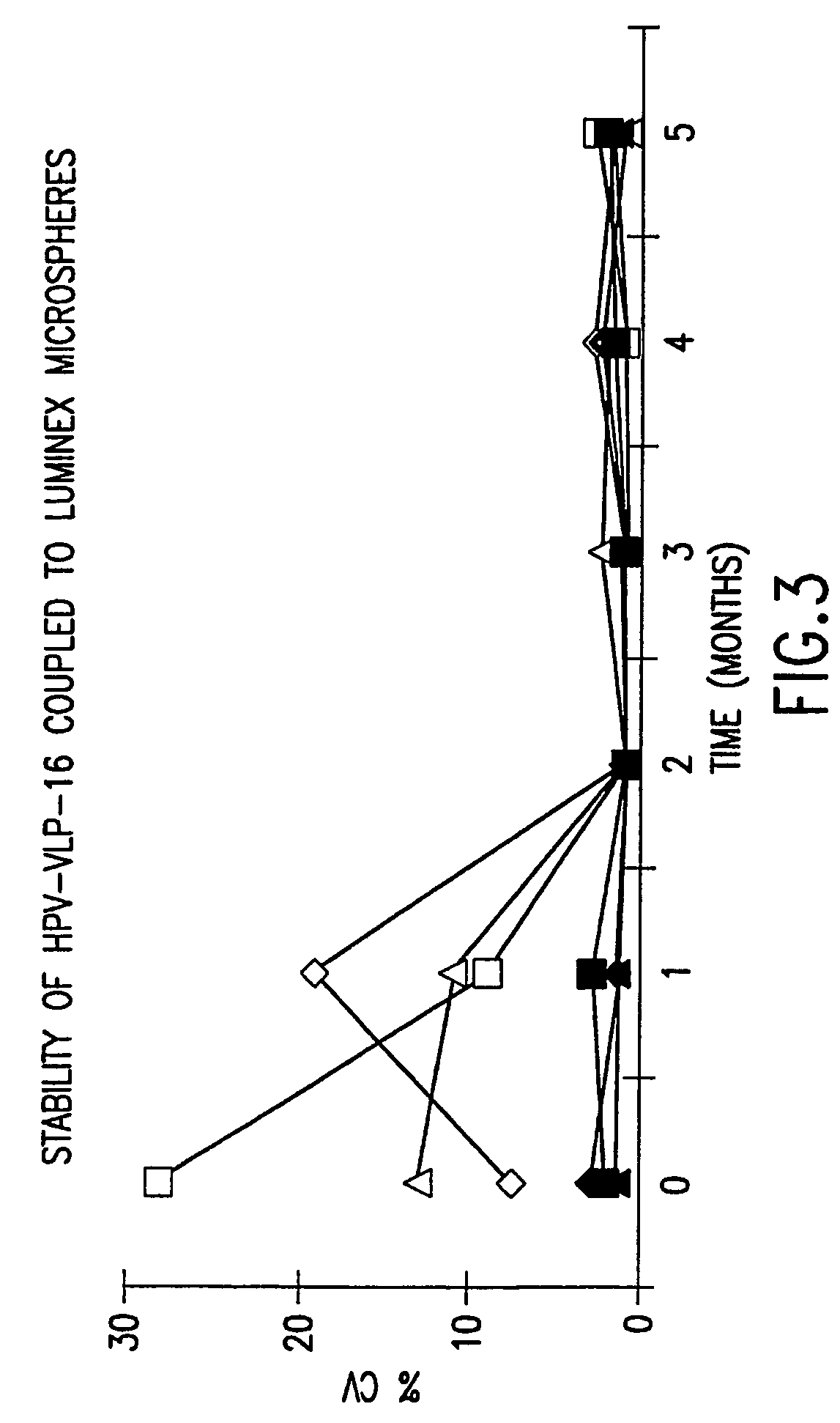Human papillomavirus multiplexed assay
a human papillomavirus and immunoassay technology, applied in the field of multiplexed immunoassays, can solve the problems of unsuitable high-throughput analysis, unable to test a large number of patients, and each of these techniques possesses one or more limitations, and achieves the effect of inducing neutralizing antibodies
- Summary
- Abstract
- Description
- Claims
- Application Information
AI Technical Summary
Benefits of technology
Problems solved by technology
Method used
Image
Examples
example 1
Virus-Like Particles (VLPs)
[0084]VLPs for HPV types-6, -11, -16 and -18 formed by the expression of the L1 gene in yeast Saccharomyces cerevisiae were purified from lysates of Saccharomyces cerevisiae as previously described in Hofmann et al., Virology 209(2): 506–18 (1995); Hofmann et al., J. Gen. Virol. 77(pt 3)(1): 465–68; Neeper et al., Gene 180(1–2): 1–6 (1996); and Rossi et al., Hum. Gene Ther. 11(8): 1165–76 (2000, and as modified in Cook et al., Protein Expr. Purif. 17(3): 477–484 (1999), which are herein incorporated by reference.
example 2
Antibodies
[0085]The following antibodies were obtained for the assay: H6.B 10.5, which is specific to HPV-6; mAb 8740 or H11.B2 (Chemicon International, Inc., Temecula, Calif.), which is specific to HPV-11; H16.V5, which is specific to HPV-16; and H18.J4, which is specific to HPV-18 (see Christensen et al., Virology 224(2): 477–86 (1996); Christensen et al., J. Virol. 64(11): 5678–81 (1990); and Christensen et al., Virology 223(1): 174–84 (1996)). Each of these antibodies were previously shown to be HPV type-specific and to bind to neutralizing epitopes (Yeager et al., Virology 278(2): 570–77 (2000)). The H6.B10.5, H11.B2, H16.V5, and H18.J4 antibodies were labeled with phycoerythrin (PE) (Chromaprobe, Inc., Aptos, Calif.). For use in the assay, the four PE-tagged mAbs were combined so that the final concentration of each mAb was 2.5 μg / ml for H6.B10.5, 1.0 μg / ml for H11.B2, 1.0 μg / ml for H16.V5, and 1.25 μg / ml for H18.J4.
example 3
Covalent Coupling of HPV VLPs to Luminex Microspheres
[0086]HPV VLP vaccines have been shown to induce type-specific, neutralizing antibodies in both humans and animals. However, denatured VLPs fail to elicit neutralizing antibodies, demonstrating that conformationally sensitive epitopes on the VLPs are critical to inducing an effective immune response. Additionally, the conformational integrity of the VLPs is sensitive to reducing conditions, pH and ionic conditions (see McCarthy et al., J. Virol. 72(1): 32–41 (1998)).
[0087]We used a carbodiide-mediated coupling reaction procedure (see Staros et al., Anal. Biochem. 156(1): 220–22 (1986)). To determine whether covalently coupling HPV VLPs to Luminex microspheres via the carbodiimide reaction would alter the conformational integrity of the VLPs, we monitored the stability of the VLP-microspheres stored at 4° C. in different buffers in the presence or absence of 1% BSA. The coefficient of variation (% CV) of 32 replicate median fluores...
PUM
| Property | Measurement | Unit |
|---|---|---|
| diameter | aaaaa | aaaaa |
| size | aaaaa | aaaaa |
| excitation wavelength | aaaaa | aaaaa |
Abstract
Description
Claims
Application Information
 Login to View More
Login to View More - R&D
- Intellectual Property
- Life Sciences
- Materials
- Tech Scout
- Unparalleled Data Quality
- Higher Quality Content
- 60% Fewer Hallucinations
Browse by: Latest US Patents, China's latest patents, Technical Efficacy Thesaurus, Application Domain, Technology Topic, Popular Technical Reports.
© 2025 PatSnap. All rights reserved.Legal|Privacy policy|Modern Slavery Act Transparency Statement|Sitemap|About US| Contact US: help@patsnap.com



